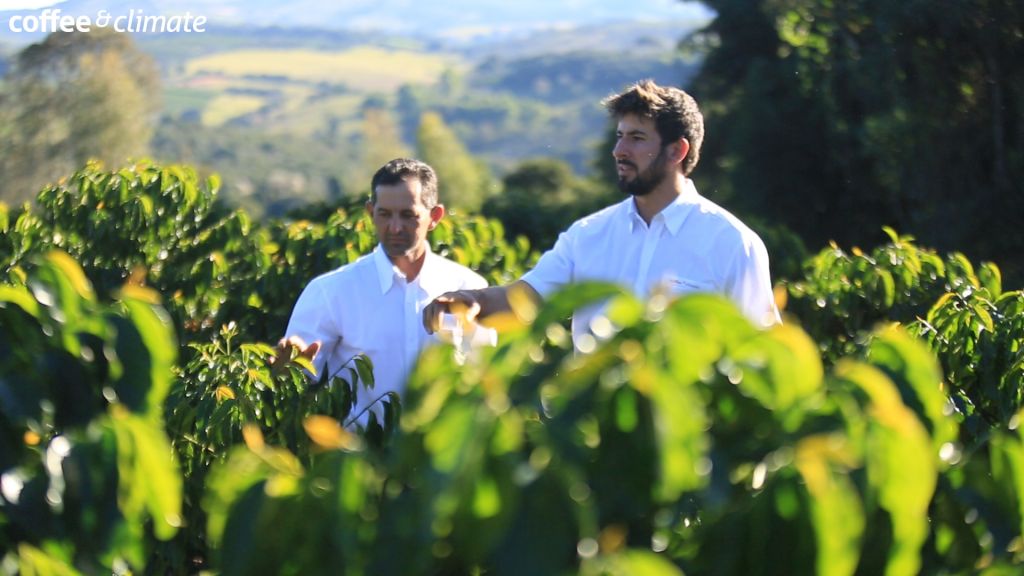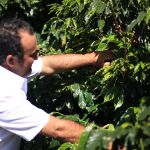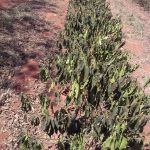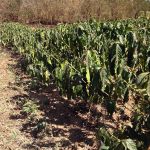Crop Insurance
Extreme and rare weather events such as drought, hail or cyclone can cause heavy losses to farmers from which it may take years to recover. In some cases, it may be feasible to transfer the risk to an insurer in exchange for a relatively small payment.
Status: already in use for Indian coffee, with reported payouts to farmers because of drought, though generally with a low level of adoption.

Concept
The insurance industry has developed a wide range of insurance products, including multiple peril crop insurance, index-based weather insurance, and weather derivatives. Index-based weather insurance (where payout is based on one or more pre-established indices such as short fall of measured rain) has recently been strongly promoted to low- and middle-income countries because of low operating costs with no need for farm-level loss adjustment. For index-based products, clearly defined trigger points are required which rely upon data from recognized weather stations. Measurements such as deficit rainfall, excess rainfall, consecutive dry/wet days, high/low temperatures are used. For insurance companies to participate in such schemes, they will require a time series of meteorological data in order to calculate probabilities of experiencing specific weather events. Crop damage insurance depends on local sampling and harvest time and is unlikely to be feasible for many smallholder situations.
Drawbacks
- Yield loss insurance:
- moral hazard (farmers have incentive to let crops fail in order to receive payouts).
- adverse selection (less skilled farmers purchase the insurance, resulting in higher premium levels and more frequent payouts).
- high transaction costs and payment delays.
- Indexed insurance:
- requirement for adequate meteorological information, both actual and historical.
- A changing climate means that future probabilities of rare events are more difficult to estimate, which leads to high perceived risk and therefore high premiums.
- In low and middle income countries, insurance schemes require government backing and high subsidy levels.
Costs
- Substantial start-up costs to
- evaluate meteorological data and remedy defects.
- carry out trials and promotions with farmers’ groups.
- Costs of premiums depend greatly on local conditions and the willingness of governments to subsidize them to the point that farmers find the deal attractive.
Recommended Activities
- For indexed-based products, all available meteorological data should be collected and examined professionally to assess its quality. In many low and middle-income countries, there are frequent problems in adequately maintaining meteorological stations and ensuring their accuracy. Any such problems need to be evaluated and solved so that all parties have confidence in the reliability of any established trigger point (such as rainfall deficit). Use of satellite data is also possible to determine drought severity or flood, as is currently being employed in India.
- Field data on losses due to extreme weather events should be collected; for example, to estimate losses from previous droughts and the frequency of these events. This data may be collected both from interviews with farmers and traders as well as records of coffee received at local dry mills, plus all available official data.
- Subsequently a series of simulations that relate costs of premiums to potential benefits can be run for a range of conditions, including coffee prices and frequency and severity of events (see case study).
- From the results of such iterations, farmers can then be interviewed to assess willingness to pay for a range of potential events and realistic losses.
Further Comments
There are three periods in the coffee production cycle that are highly sensitive to weather related risks:
- flowering period,
- beginning of the growing period,
- harvest period.
During these periods coffee trees are most susceptible to the following climatic risk factors: scarcity or excess of rainfall, strong wind, low temperatures (frost risk), hail, and high temperatures (risk of flower abort after sequences of consecutive days with maximum temperatures above 32 o 33°C during the flowering period). The timing of these critical periods and the thresholds of the indices that will relate these weather risks to coffee crop yields vary according to each producing region (climate, varieties, production system, altitude, etc.) and ideally should be jointly defined after proper modelling efforts as well as through discussions with researchers, extentionists, cooperative leaders and farmers at the local level. This step is crucial for the proper design of the index insurance products. Previous efforts should be studied for lessons learned: an Indian index-based Rainfall Insurance Scheme for Coffee Growers (RISC) was introduced in 2007 after the coffee growing region suffered a serious drought from 2002 to 2005. It was introduced by the Agriculture Insurance Company of India in association with Coffee Board of India who pays a 50% subsidy of the premium for smallholders. In 2011, the Coffee Board hoped for 13,000 growers to pay the premium but only 3,694 growers.
- Have something to add to this tool description? Leave a comment!
- Interested in applying this tool? Look for pictures, case studies and info sheets below for step-by-step instructions to get you started.




That’s good to know that you could get insurance for your crops. I would think that would super useful if something unexpected happened like a fire. I’ll have to consider getting some of that if I decide to start farming.
That’s a cool idea to get some insurance to help protect your crops. My friend is thinking about starting a farm, but he is worried that if something bad like a natural disaster happens, that he will lose his entire income for the season. I’ll have to suggest that he looks into getting some crop insurance, so he doesn’t have to worry about that.